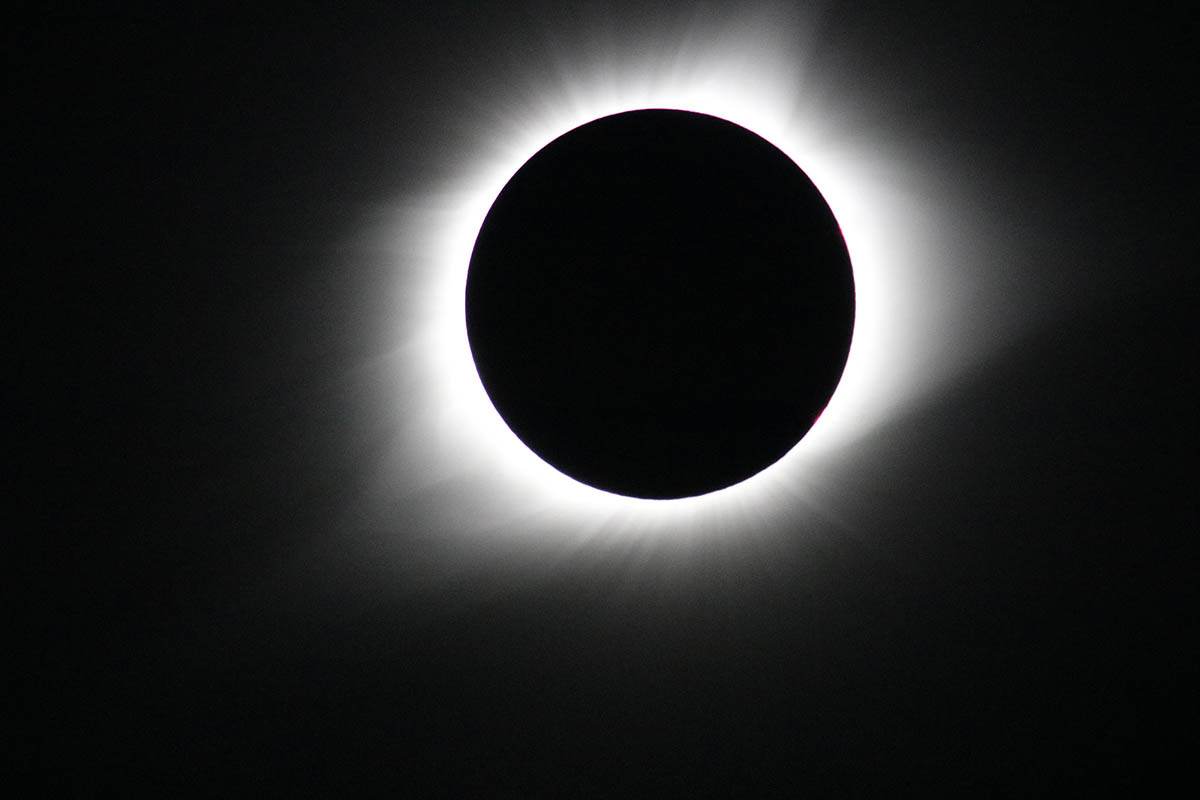Parker Solar Probe will explore the corona, a region of the Sun only seen from Earth when the Moon blocks out the Sun’s bright face during total solar eclipses. The corona holds the answers to many of scientists’ outstanding questions about the Sun’s activity and processes. This photo was taken during the total solar eclipse on Aug. 21, 2017. (NASA/Gopalswamy)
Home Parker Solar Probe will explore the corona, a region of the Sun only seen from Earth when the Moon blocks out the Sun’s bright face during total solar eclipses. The corona holds the answers to many of scientists’ outstanding questions about the Sun’s activity and processes. This photo was taken during the total solar eclipse on Aug. 21, 2017. (NASA/Gopalswamy) Parker Solar Probe will explore the corona, a region of the Sun only seen from Earth when the Moon blocks out the Sun's bright face during total solar eclipses. The corona holds the answers to many of scientists' outstanding questions about the Sun's activity and processes. This photo was taken during the total solar eclipse on Aug. 21, 2017. (NASA/Gopalswamy)
Parker Solar Probe will explore the corona, a region of the Sun only seen from Earth when the Moon blocks out the Sun’s bright face during total solar eclipses. The corona holds the answers to many of scientists’ outstanding questions about the Sun’s activity and processes. This photo was taken during the total solar eclipse on Aug. 21, 2017. (NASA/Gopalswamy)



